10 Underrated Exercises Cyclists Should Do More Often, According to Coaches and Trainers
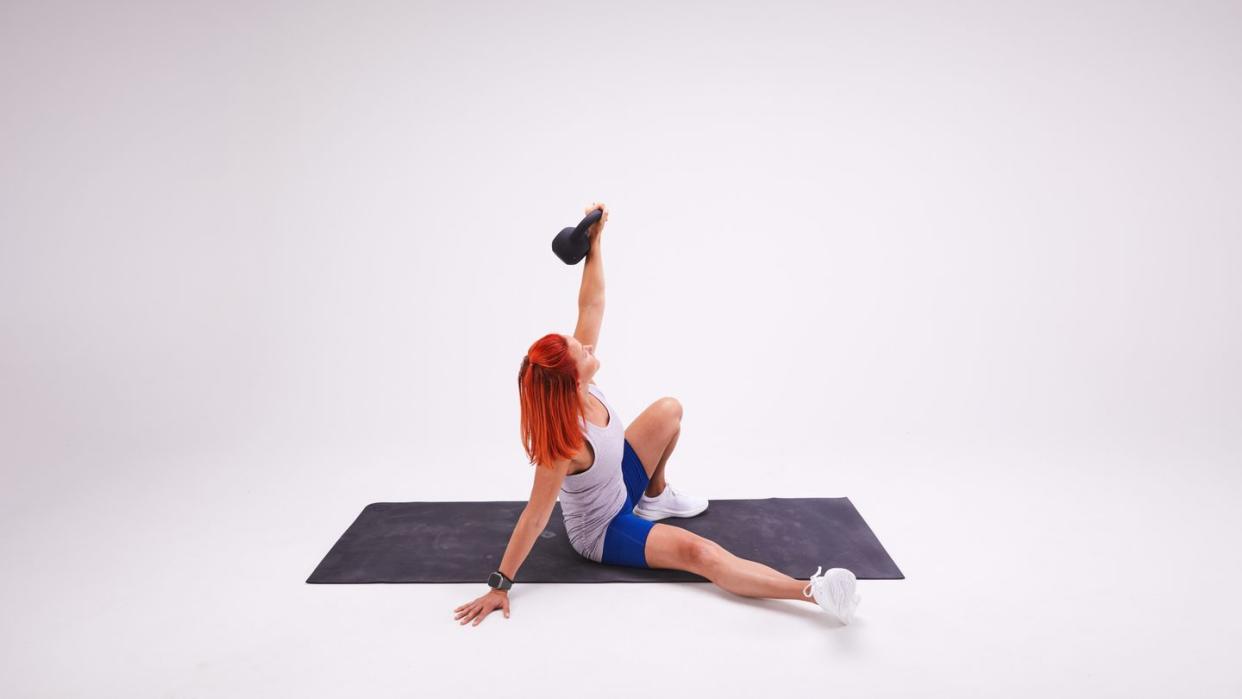
When you love cycling, it’s tempting to hop in the saddle for every. single. workout. But taking time to strengthen and mobilize your body off the bike is important for a host of reasons.
Think about it: Cycling is a repetitive activity that occurs in only one direction. “You’re just pedaling in a forward motion,” Paul Warloski, certified personal trainer, USA Cycling level 2 coach, and owner of Simple Endurance Coaching in Milwaukee, Wisconsin, tells Bicycling. As a result? “A lot of muscles don’t get utilized.”
Moreover, the hunched, seated position can tighten up certain areas, like your hip flexors, and lead to low back pain if your core muscles aren’t strong enough to hold good form, Bekah Rottenberg, Oregon-based certified personal trainer, PMBI-certified mountain bike coach, and founder of Brave Endeavors, tells Bicycling.
Prolonged standing on the bike, which is common in mountain biking, can be harmful too, because it can be tough to evenly distribute weight in the feet. This unequal distribution can lead to muscular imbalances and ultimately up your risk of injury, Rottenberg explains.
Fortunately, there’s a simple solution. By supplementing your rides with strength training and mobility work, you can reduce your injury risk, boost your cycling performance, and generally just feel better. Prioritizing strength training in particular can also help you better withstand the physical stress of training, adds Warloski, and bolster bone density, which is especially beneficial because cyclists are prone to bone health-related issues.
“Pretty much every cyclist I know could benefit from spending a little bit more time lifting weights,” says Rottenberg. And sprinkling in mobility exercises is important, too, to help undo some of the tightness that results from sitting in the saddle.
With that in mind, we tapped six fitness pros for a list of underrated exercises every cyclist should add to their routine. From classic moves like the single-leg deadlift and side plank, to lesser-known picks, like a clamshell raise and hip CAR, these are the exercises worth slotting into more of your gym sessions.
10 Underrated Exercises for Cyclists
1. Hip Bridge with Alternating Dumbbell Press
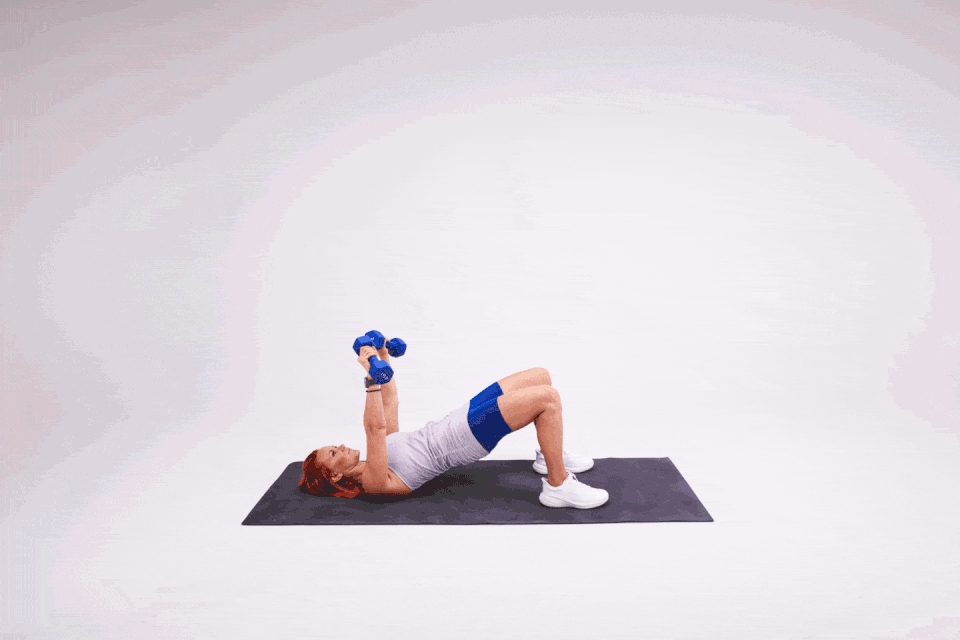
Why it works: The seated position of cycling puts the hips into prolonged flexion, which can cause issues like sciatica and other types of nerve pain, Ryan Hopkins, C.S.C.S., exercise scientist, strength coach for Team Wilpers, and co-owner and head coach of SoHo Strength Lab in New York, tells Bicycling. A hip bridge helps counteract that by placing the hips into extension, lengthening the top of the quads, and firing up posterior muscles—including the glutes, hamstrings, and back extensors—that aren’t worked as much in cycling. Also, the core challenge of the alternating dumbbell press translates to pulling on the handlebars as you ride, Hopkins adds.
How to do it: Lie faceup on floor, knees bent and feet planted. Hold a dumbbell in each hand, directly over shoulders, arms extended. Lift hips off the ground, back flat with slight pelvic tilt toward ceiling. This is the starting position. Keeping one arm straight, bend the other elbow to lower weight toward floor. Tap elbow to floor, then straighten arm to return to starting position. Repeat with other arm. Continue alternating for 6 reps per side (if using heavy weights) or 8-10 reps per side (if using lighter weights).
The best time to do it: Folks new to strength training can do this as part of a standalone strength session, while more advanced riders can pencil it in after a long ride.
2. Clamshell Raise

Why it works: This move—a cousin to the side plank—challenges your core strength through anti-rotation. As you lift your top knee, you have to really engage your core to keep your hips stacked and prevent your top hip from rolling backwards as it naturally wants to do. Training anti-rotational strength can help keep your torso stable on the bike and thus generate more power in your pedal stroke, considering you won’t be wasting energy rotating side to side, Warloski explains.
This exercise also engages your gluteus minimus and gluteus medius, two smaller muscles of the buttocks that aren’t targeted much while riding. You’ll also fire up your transverse abdominis, a deep core muscle, says Warloski. By honing in on these oft-neglected muscles, you can boost your overall strength while reducing injury risk, he explains.
How to do it: Lie on side with forearm on the ground, elbow directly under shoulder, and a mini band placed several inches above knees. Stack hips, knees, and feet, and bend knees and hips. This is starting position. Press bottom leg into the ground, keep feet stacked, and lift hips up. At the same time, rotate top leg and lift top knee toward the ceiling. Lower leg, then hips back to floor. Repeat for reps. Then switch sides. Do 6-8 reps per side.
The best time to do it: Whenever you can fit it into your schedule, says Warloski, with the exception being you probably don’t want to do it right before a race.
3. Hip CAR
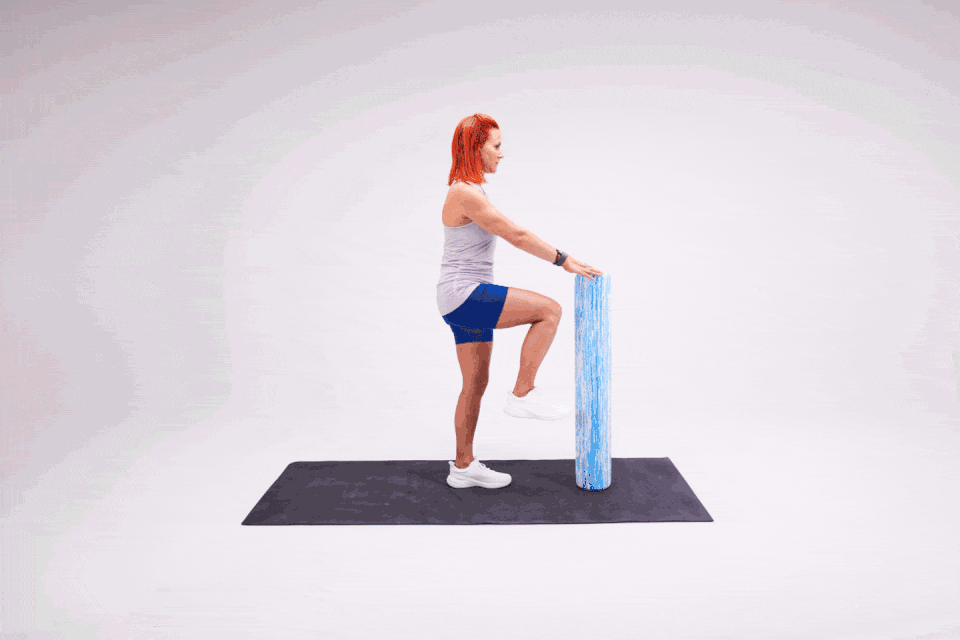
Why it works: Have tight, fussy hips from riding all day? The hip CAR is for you. CAR stands for controlled articulated rotation, and this mobility drill, recommended to Bicycling by Wesley Showalter, C.S.C.S, Chicago-based certified functional strength coach, takes your hips through their full active range of motion, helping to counteract the hip tightness that comes from sitting in the saddle for long periods of time.
How to do it: Stand tall with one hand on a wall, or hook arm around a pole or barbell rack. Squeeze other hand into a fist. Lift leg that’s away from the wall, dorsiflex that foot (pull toes up toward nose), and bend knee, raising it to hip height. This is the starting position. Sweep knee out to side as far as possible. Then bring it around behind you, as far as possible without extending low back or tilting hips. Then, bring it forward to return to starting position. Should move knee in clockwise circle. Now reverse it to make a counterclockwise circle. That’s 1 rep. Repeat for reps. Then switch sides. Do 3-5 sets of 2-3 reps per side.
The best time to do it: Perform this at the beginning of a workout as part of a warmup, afterwards as part of a cool down, or work it into a strength session as recovery between heavy lifts, suggests Showalter.
4. Single-Leg Deadlift
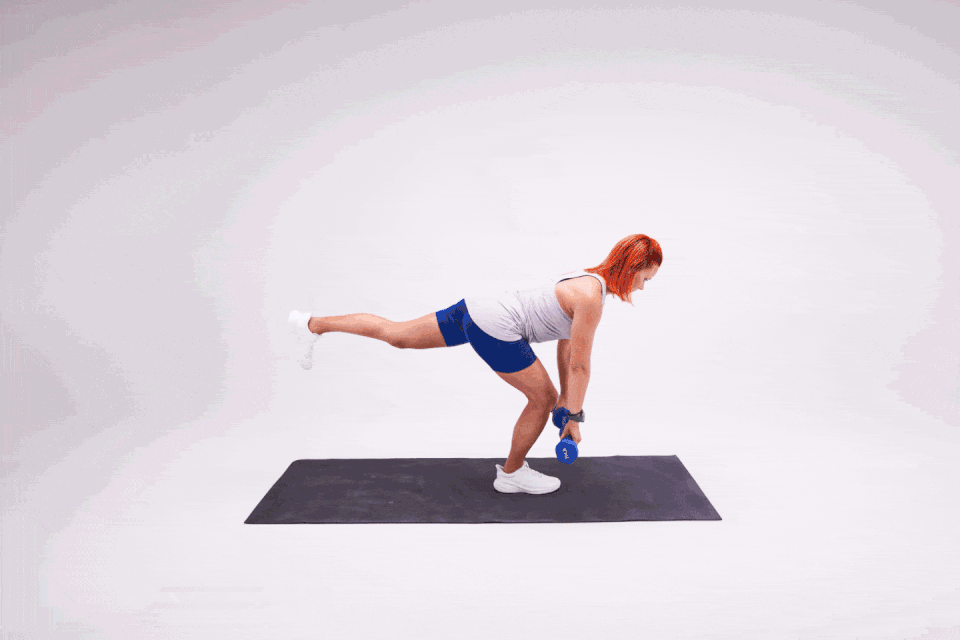
Why it works: Regular deadlifts are a great exercise for practicing the hip hinge (a crucial movement pattern for cyclists) and strengthening your posterior chain, especially the glutes, hamstrings, and low back. Stronger glutes and legs can improve your cycling economy by increasing your force production and thus your speed, says Showalter.
The single-leg deadlift provides the added benefits of training balance, single-leg strength and single-leg stabilization. Plus, it can help you identify and ultimately correct muscle imbalances between your legs, which is essential for efficient cycling, Meghan Kennihan, certified personal trainer and USA Cycling level 3 coach in LaGrange, Illinois, tells Bicycling.
This exercise also promotes hip extension on the leg that’s floating back behind you, which provides a nice counterbalance to all the hip flexion you’re locked into while pedaling, says Showalter.
How to do it: Stand with feet hip-width apart, slightly bend left knee, and transfer weight to right leg. While keeping a flat back, hinge at hips, sending butt straight back, torso reaching toward ground, and right leg lifting behind you. Hinge until you feel a stretch in hamstrings. Drive through left foot to stand back up. Repeat for reps. Then switch sides. Do 2 sets of 8 reps per side, working up to 3 sets. If it’s hard to balance, place back right toes on ground. Once you’ve mastered the bodyweight version, add free weights to increase the difficulty.
The best time to do it: Incorporate single-leg deadlifts into a standalone strength session, suggests Kennihan. Or, if you’re just using your bodyweight, insert them into a dynamic warmup before you hop on the bike, she adds.
5. Quadruped Hip Adductor Rock

Why it works: Another mobility drill, this move stretches your adductors (inner thighs), which for many cyclists can be tight, says Showalter. Doing mobility exercises like this one can help counteract the effects of staying in a locked position on the bike as you ride, which will ultimately reduce your risk of injury and generally help you feel better, Showalter explains.
How to do it: Get into an all-fours position with shoulders over wrists and hips over knees. Extend one leg straight off to the side, and dig toes on other foot into the ground. This is the starting position. Exhale and push hips toward ankles, feeling a stretch in inner thighs without forcing the range of motion. Inhale and shift hips forward to return to starting position. Move at a controlled pace and don’t rely on momentum to shift positions. Repeat for reps. Then switch sides. Do 3-5 sets of 5-6 reps per side.
The best time to do it: This move works well at really any point—before a ride, after a ride, or even in the middle of a ride if you feel like you need a good stretch and are willing to hop off the saddle for a moment.
6. Bulgarian Split Squat

Why it works: This squat variation fires up a ton of lower-half muscles, including your quads, hamstrings, glutes, and hip stabilizers, and boosts leg strength and stability, which is essential for generating power as you ride and maintaining proper alignment, Kennihan explains.
How to do it: Stand in front of a chair, bench, or couch, facing away from it. Place right foot on top of chair. Place hands on hips or in front of chest. Bend left knee and lower toward floor. Keep left knee tracking over toes and lower as much as possible, aiming to get back knee to lightly tap floor. Pause, then push through front foot to stand up. Repeat. Do 2-3 sets of 8-10 reps per side. Start with bodyweight, then progress to weight.
The best time to do it: Include these in a standalone strength-training session along with single-leg deadlifts, ideally on days when you’re not intensely cycling, says Kennihan.
7. Side Plank
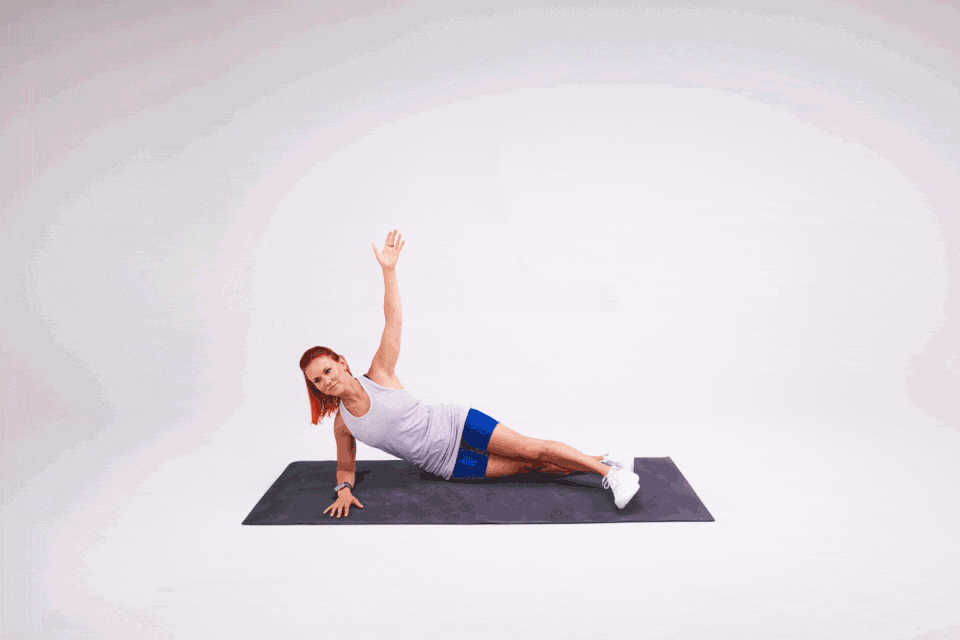
Why it works: This classic plank variation really targets your obliques (muscles on the sides of your torso), “which play a significant role in stabilizing the body during cycling,” says Kennihan. “Strengthening these muscles can enhance overall core stability,” as well as prevent you from shifting side to side on the bike, a less-than-ideal habit that can result in inefficient energy transfer, she explains.
How to do it: Lie on side with elbow directly beneath shoulder and legs stacked on top of each other. Lift hips off ground, creating a straight line from head to feet. Hold for 30-60 seconds. Then switch sides.
The best time to do it: Sprinkle these into a core workout or incorporate them into your preride warmup to activate your midsection. Alternatively, perform them postride as part of a cool-down routine, suggests Kennihan.
8. Single-Leg Hip Thrust

Why it works: Your glutes are a powerhouse muscle group—Rottenberg refers to them as your “second tank”—but a lot of us struggle to effectively engage them.
“Most people, especially cyclists, tend to be very quad-dominant, where every time you pedal, most of your power is deriving from your quadriceps,” Rottenberg explains. “But if you can tap into your posterior chain—so the glutes, the hamstrings—all of a sudden, you'll have way more muscle fibers to pull from to help power you up the climb or along the trails.” The single-leg hip thrust is a great exercise for activating and strengthening this mighty muscle group.
How to do it: Lie with mid-back on a bench or couch and feet on the floor. Bend knees 90 degrees, and shift weight to right foot. Drive that foot into floor, keep a neutral spine, and engage glutes to lift hips up until torso is parallel with the floor. Keep chin tucked, looking down torso. Then lower hips. Repeat for reps. Then switch sides. Do 2 sets of 8 reps per side, progressing to 3 sets with weight.
The best time to do it: Ideally, you’d do this in a standalone strength session on a day off the bike, or a mellow spin day, says Rottenberg. If you’re pressed for time, though, “it’s better to pair the movements with a ride than not do them at all,” she adds.
9. Turkish Get-Up

Why it works: The Turkish get-up is a full-body, advanced exercise that works on coordination, mobility and core strength, as well as shoulder stability and endurance, according to Rottenberg.
Strong, stable shoulders are important for both mountain bikers and road cyclists, as they help maintain an upright torso when you’re seated on the bike (versus collapsing forward onto the bars). Moreover, the coordination challenge of the Turkish get-up, and the fact that it demands full-body control, can help cyclists better react to unexpected elements on the roads or trails, like obstacles or other riders that suddenly appear in the path, she adds.
How to do it: Place kettlebell on ground and lie next to it on right side so that weight is just outside right shoulder. Bend knees and stack left leg on top of right. Grasp handle of bell with right hand underneath and left hand on top. Keep the bell as close to body as possible and roll onto back, knees bent, feet planted on ground. As you roll to back, bring both hands to center of chest. Use both hands to press bell directly above right shoulder, arms straight. Keep right hand extended, holding bell, and place left arm on ground at a 45-degree angle from body. Straighten left leg and place it at a 45-degree angle from body. Keep right knee bent, foot flat on floor. Leading with chest and pressing left foot and left arm into the ground, lift body up onto left forearm, sitting up on a slight diagonal. Press through left hand to lift left forearm off the floor, and corkscrew hand so fingers face diagonally behind you, sitting up taller. Press through both feet and left hand to lift hips into a bridge position. Sweep left leg underneath body and place left knee on the ground, in line with left hand, with toes tucked. Press through left palm, drive hips to right side, and lift left hand off the ground, using obliques to come into a tall kneeling position, with left shin perpendicular to right foot. Windshield wipe leg so foot is now behind you, in a regular half-kneeling position. Look forward. Drive through the right front foot and back left foot to stand up, kettlebell staying overhead, bicep by ear. This is the halfway point. Now, reverse the movements you just performed to return to starting position. Repeat for reps. Then switch sides. Do 5-10 reps per side. Start with bodyweight, then add a light weight.
The best time to do it: Similar to the hip thrust, you’d ideally do this in a standalone strength session on a day off the bike, or a mellow spin day, says Rottenberg. In a time crunch though, you can do this before or after a ride, as that would be better than skipping it altogether.
10. Single-Arm Kettlebell Swing

Why it works: This exercise can boost leg power, which can be beneficial for sprint training, says Warloski. Additionally, the one-arm component incorporates anti-rotation work, he adds—your core muscles have to engage to prevent your torso from rotating as you swing the weight.
How to do it: Place a kettlebell on the ground and stand several feet behind it, feet hip-width apart, knees slightly bent. Hinge at hips, sending butt straight back, and grab kettlebell with one hand. Inhale and pull the bell back between legs. Then, exhale and drive feet into ground and extend hips to stand up, swinging bell forward and up to chest height. Hit a plank position at the top. Allow momentum to bring the bell back between legs again as you inhale, hinge hips, and bringing torso toward floor. Repeat for reps. Then switch sides. Do 10-12 reps per side.
The best time to do it: As part of a standalone strength session or in a strength session after a ride, says Warloski.
You Might Also Like

